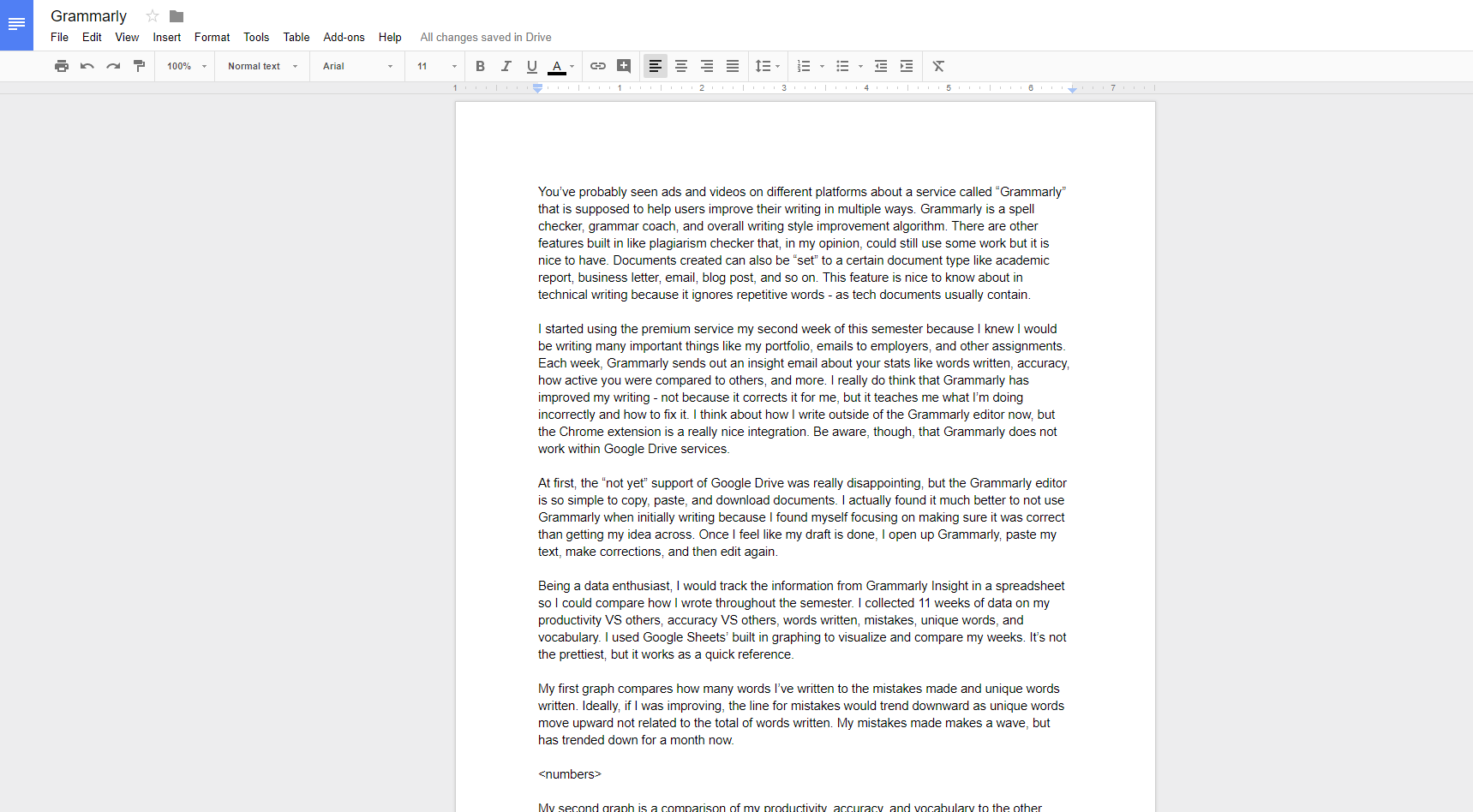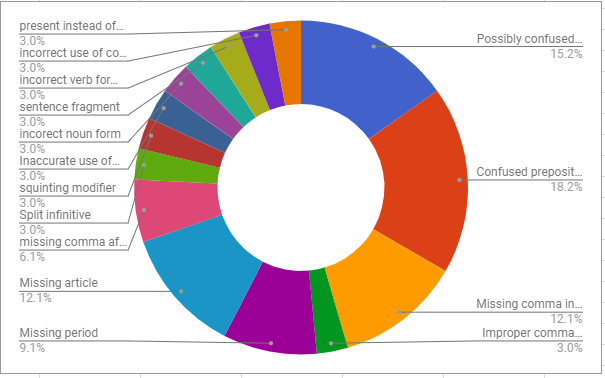You’ve probably seen ads and videos on different platforms about a service called “Grammarly” that is supposed to help users improve their writing in multiple ways. Grammarly is a spell checker, grammar coach, and overall writing style improvement algorithm. There are other features built in like plagiarism checker that, in my opinion, could still use some work but it is nice to have. Documents created can also be “set” to a particular document type like an academic report, business letter, email, blog post, and so on. This feature is nice to know about in technical writing because it ignores repetitive words - as tech documents usually contain.

I started using the premium service my second week of this semester because I knew I would be writing many essential things like my portfolio, emails to employers, and other assignments. Each week, Grammarly sends out an insight email about your stats like words written, accuracy, how active you were compared to others, and more. I do think that Grammarly has improved my writing - not because it corrects it for me, but it teaches me what I’m doing incorrectly and how to fix it. I think about how I write outside of the Grammarly editor now, but the Chrome extension is a nice integration. Be aware, though, that Grammarly does not work within Google Drive services.

At first, the “not yet” support of Google Drive was really disappointing, but the Grammarly editor is so simple to copy, paste, and download documents. I actually found it much better not to use Grammarly when initially writing because I found myself focusing on making sure it was correct than getting my idea across. Once I feel like my draft is done, I open up Grammarly, paste my text, make corrections, and then edit again.

Being a data enthusiast, I would track the information from Grammarly Insight in a spreadsheet so I could compare how I wrote throughout the semester. I collected 11 weeks of data on my productivity VS others, accuracy VS others, words written, mistakes, unique words, and vocabulary. I used Google Sheets’ built-in graphing to visualize and compare my weeks. It’s not the prettiest, but it works as a quick reference.

My first graph compares how many words I’ve written to the mistakes made and unique words written. Ideally, if I were improving, the line for mistakes would trend downward as unique words move upward not related to the total of words written. My mistakes made makes a wave but has trended down for a month now

My second graph is a comparison of my productivity, accuracy, and vocabulary to the other users of Grammarly. My most weeks were 6 and seven as I was more productive than 98% of Grammarly users after writing 32,573 and 29,075 words respectively. My most accurate week was also week six as I was more accurate than 95% of all users, but my average accuracy is more like 73%.

My last graph is my most common mistakes. Insight tells me my top three mistakes for the week, and over 11 weeks, my overall mistakes were: confused preposition (and “possibly confused preposition”), missing comma in a compound sentence, and missing article.

So, would I recommend Grammarly? Absolutely. For about $100 a year, Grammarly is an excellent background-agent that helps you write correctly, cohesively, and more verbose. Grammarly has helped me with many of my papers, projects, and emails this semester alone. As someone that works alone a lot and has to send what I write to others, it’s comforting to have someone - or something - look at your work.


